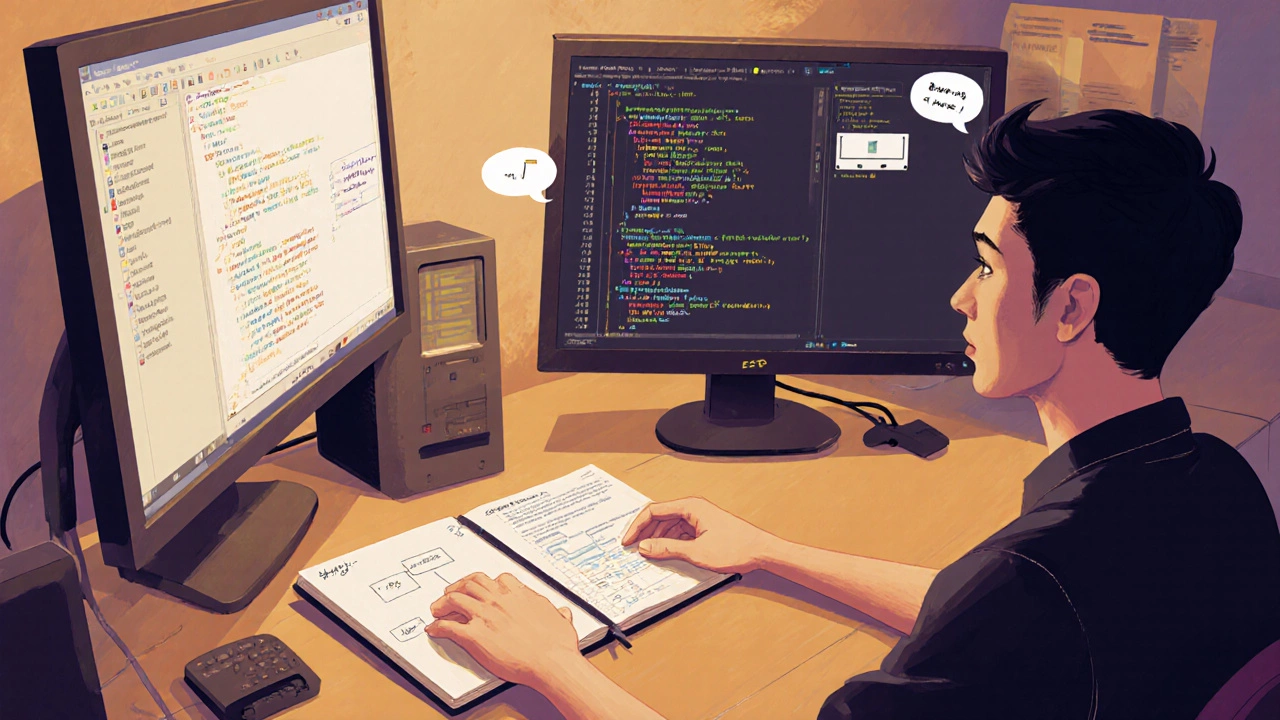Ever stared at a code sample and felt your brain melt? You’re not alone. Some languages are notorious for their steep learning curve, and figuring out which one tops the difficulty chart can guide your study plan, career choices, or even hobby projects.
When we talk about the hardest programming language, we’re really asking which language demands the most mental bandwidth, low‑level thinking, or abstract reasoning from a newcomer. Below we break down the key factors that make a language tough, examine the usual suspects, and give you a practical checklist so you can tackle any language without losing your sanity.
What Makes a Language Hard?
Before naming a single “hardest” language, understand the ingredients that stack up difficulty. Each factor can be weighted differently depending on your background.
- Syntax verbosity - How many symbols or keywords do you need to write a simple operation?
- Memory management model - Do you control allocation and deallocation manually?
- Abstraction level - Does the language hide hardware details or expose them?
- Tooling ecosystem - Are compilers, debuggers, and libraries mature and beginner‑friendly?
- Paradigm complexity - Functional, logic, and concurrent paradigms can be conceptually heavy.
- Error messages - Cryptic compiler output makes debugging painful.
Top Contenders for the Hardest Language
Below are six languages that consistently appear in surveys and forums when developers debate “hardest language”. Each is introduced with microdata so search engines can map the entities directly.
C++ is a compiled, multi‑paradigm language that blends low‑level memory control with high‑level abstractions. Its complex template system and manual memory management make it a frequent pick for the difficulty list.
Haskell is a pure functional language that emphasizes immutability and lazy evaluation. Its type system, monads, and lack of side effects challenge programmers used to imperative styles.
Malbolge is an esoteric language designed to be almost impossible to program in. Its self‑modifying code and unintuitive instruction set were deliberately crafted as a puzzle.
Brainfuck shrinks its instruction set to eight symbols, forcing developers to think in terms of a tape‑based memory model. Even simple loops become mind‑bending.
Assembly language (specifically x86) operates directly on CPU registers and memory addresses. Mastering calling conventions, stack frames, and bitwise tricks requires a hardware mindset.
Prolog is a logic programming language where you declare facts and rules, then let the interpreter resolve queries. Its backward‑chaining execution model can feel alien to procedural programmers.
Side‑by‑Side Comparison
| Language | Syntax Complexity (1‑5) | Memory Management | Paradigm | Typical Use Cases |
|---|---|---|---|---|
| C++ | 4 | Manual (RAII, pointers) | Procedural, OOP, Generic | Game engines, high‑performance systems |
| Haskell | 4 | Garbage‑collected | Pure Functional | Compilers, research, concurrency libraries |
| Malbolge | 5 | Self‑modifying memory | Esoteric | Puzzle challenges, language design studies |
| Brainfuck | 5 | Pointer‑like cell array | Esoteric | Code golf, teaching minimalism |
| Assembly language | 5 | Direct hardware access | Procedural (low‑level) | Embedded systems, OS kernels |
| Prolog | 4 | Garbage‑collected | Logic | AI reasoning, rule‑based systems |

Why No Single Language Wins Every Vote
The “hardest” label is highly personal. A systems engineer who’s comfortable with registers will find Assembly natural, while a mathematician might breeze through Haskell’s type system. The table above shows that each language spikes in different difficulty dimensions.
What matters most is matching the language’s challenge profile to the skill you want to develop. If you aim to understand how computers execute instructions, Assembly is the ultimate teacher. If you want to master abstract reasoning, Haskell or Prolog provide that mental workout.
Practical Tips for Tackling a Difficult Language
- Start with a focused tutorial that teaches a single concept end‑to‑end. For example, write a “Hello, World” in Assembly using an online emulator before diving into full programs.
- Use visual debugging tools. Many IDEs (e.g., CLion for C++, GHCi for Haskell) let you step through code and inspect memory, which is priceless when error messages are cryptic.
- Read the language’s official specification. Even if it reads like a legal document, knowing the exact rules prevents misconceptions.
- Implement classic algorithms (sorting, binary search, factorial) in the target language. Comparing a known algorithm’s output with a reference helps you verify your mental model.
- Join niche communities. Subreddits for esoteric languages, Haskell Slack groups, and Assembly forums often share cheat‑sheets that cut learning time dramatically.

Quick Reference Cheat Sheet
- C++: Remember the Rule of Three/Five, use smart pointers to avoid leaks.
- Haskell: Master monads early; the
donotation is just syntactic sugar for chaining. - Malbolge: Most people copy existing programs; writing from scratch is a novelty.
- Brainfuck: Visualizers that show the tape and pointer movement are essential.
- Assembly (x86): Learn calling conventions (stdcall vs cdecl) before writing functions.
- Prolog: Think in terms of facts and rules; back‑tracking solves many puzzles automatically.
Frequently Asked Questions
Is C++ really the hardest language for beginners?
C++ ranks high because it blends low‑level memory control with advanced features like templates. Beginners often stumble on pointers and undefined behavior, but with modern libraries and smart pointers the barrier can be lowered.
Why do esoteric languages like Malbolge exist?
They’re created as puzzles or art pieces, meant to explore the limits of language design. While they have no commercial use, they spark creative thinking and expose hidden assumptions about readability.
Can I become a professional developer by learning Assembly?
Assembly knowledge is valuable for performance‑critical roles (e.g., embedded systems, OS development). Most day‑to‑day work still uses higher‑level languages, but the low‑level mindset improves debugging and optimization skills.
How long does it take to feel comfortable with Haskell?
It varies, but many learners report a 3‑6 month period of consistent practice before they can read and write idiomatic Haskell without frequent “type error” panic.
Is Brainfuck useful beyond novelty projects?
Mostly not. It’s great for teaching concepts like pointer movement and for code‑golf challenges, but real‑world applications opt for more expressive languages.
Bottom line: there isn’t a single “hardest” language that trumps all others in every way. The difficulty you experience hinges on your background, the specific challenges a language presents, and the resources you tap into. Pick a language that aligns with the skill you want to sharpen, follow the checklist above, and you’ll turn that initial frustration into a powerful new competence.





